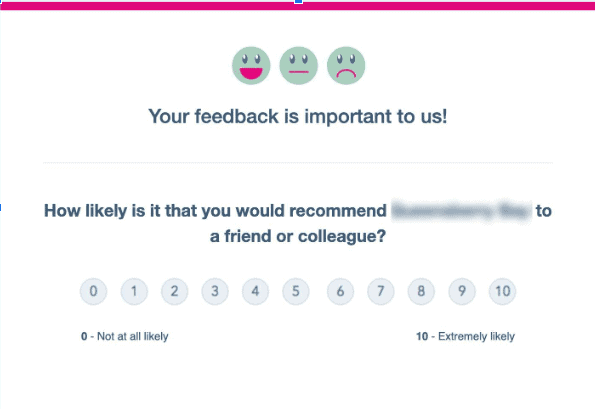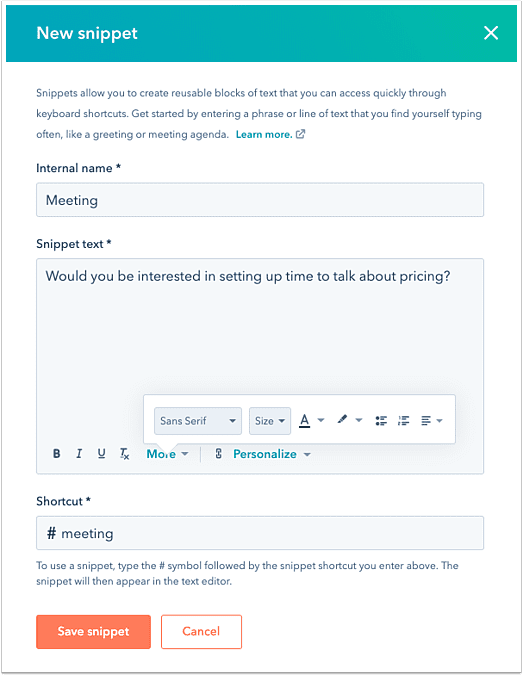Is your marketing team working overtime, yet you’re still not seeing the increase in sales or customer engagement that you’d like?
Marketing is an important aspect of any business, but your marketing team shouldn’t operate as lone rangers. By creating channels of communication and collaboration between your customer service and marketing teams, you can improve your customer experience while increasing revenue: the best of both worlds.
Using the customer service tools offered by HubSpot to support your marketing team can rejuvenate your marketing strategies and take your business to the next level.
Making use of customer feedback
Customer feedback is essential for any business to learn and grow. Often, those who help you develop the most are your unhappy customers. Gathering feedback helps you understand how customers are feeling, and you can use this to create brand loyalty. This grows a business more quickly than sales or marketing, with loyal customers on average buying 90% more frequently and spending 60% more per transaction.
Customer service teams can make use of the A.C.A.F customer feedback loop to gain information on customer satisfaction and complaints. Here’s how it works:
- Ask for customer feedback
- Categorise the type of feedback
- Act upon it
- Follow-up with customers who shared feedback
So, in practice, this might look something like this, if you’re looking to understand how your customer service team are doing at following up on complaints:
- Once an issue has been resolved, ask customers who’ve made a complaint if they’re happy with the service they received
- Group the feedback into buckets that are useful in helping you understand performance and the actions that need to be taken
- Take the relevant actions, for example installing a chatbot for faster response times
- Closing the loop can be done in many ways depending on the nature of the issue, feedback and responses, but you could, for instance, send a personalised email to thank customers for their time and offer a discount code
Creating customer satisfaction surveys can be achieved with HubSpot. Simply navigate to Service > Feedback Surveys in your HubSpot account and select ‘create survey’ in the upper right, followed by ‘customer satisfaction’ and ‘next’. You will then be able to create your survey, including selecting options for email or website delivery, and follow-up questions.
The results of these feedback surveys can be shared with your marketing teams to inform future campaigns, such as the promotion of popular products, or creating targeted follow-ups to nurture happy customers.
We’ve seen first-hand the difference this approach can make. A holiday rental client made use of customer feedback to inform their marketing strategy, by highlighting people who said they would be likely to book again. Their details were then given to the marketing team, who were able to use automations to effectively target and nurture these contacts. By April 2022, a quarter of those who had said in late 2021 that they would book another holiday had done just that.

Chatflows for marketing
For customer services, chatflows are an invaluable tool. They are available as widgets on your website pages and can be used to connect your customers to a member of your team in real-time. This allows your customer service team to deal with tickets quickly and efficiently, improving customer experience.
Creating a chatflow for your website is simple with HubsSpot. Simply enter your HubSpot account and navigate to Conversations > Chatflows, where you will find an option to ‘create chatflow’ in the upper right-hand corner.
These handy chatflows can also be used to inform marketing techniques. The information given in the chats can be collected and used as part of marketing nurture strategies. And of course, live interaction between a customer and a customer service agent provides an opportunity to upsell and tap into what users specifically need depending on their circumstances.
While live chatflows are a brilliant way to communicate with customers directly and gather information concerning their wants and needs, bot-operated chatflows can also prove useful to your marketing team. Bots use a series of automated questions and responses to help with a range of tasks such as qualifying leads, booking meetings and creating support tickets, before connecting customers with a member of the customer service team to assist if necessary. Bots are an especially helpful tool for your marketing team, as they provide standardised data and the opportunity for marketing to input options.
When we implemented these strategies with an e-commerce client, we found that there was a staggering 23% higher average order value from customers who had spent time talking to the customer service team via live chat. Not only that, but the increased average number of orders from these nurtured contacts resulted in an additional average revenue of £144 per contact.
Customer service communications as a marketing opportunity
Communication between customers and customer service agents should also be seen as a marketing opportunity.
Using HubSpot, you can create templates and snippets to be used by customer services to provide branded communications, such as personalised emails with links to social media or information concerning events. Customer service and marketing teams can access and input on these, ensuring everyone is on the same page and customers receive consistent targeted messaging.
Sales templates can be accessed in the HubSpot CRM or when sending emails from your inbox. You can save repetitive email content as templates, which can be personalised and used for sending one-to-one emails, saving your agents time that can be better spent on more valuable tasks.
Snippets are small reusable text blocks. They can be to leave notes about prospects in the CRM, to provide a fast response in live chat conversation, or pulled into an email. Snippets can be created from your HubSpot account by navigating to Conversations > Snippets.
A large e-commerce client told us that on big occasions such as product or event launch days, they usually experience a large influx of similar enquiries, which the customer services team must deal with.
Using HubSpot snippets, the managers from both the customer service and marketing departments were able to agree on a party line for the business in advance of a launch. This was then passed on to the customer service team, who found that using HubSpot snippets allowed them to answer 3 times as many enquiries on average than simply copying and pasting from previous emails.

Valuable Insights
Customer service agents spend more time communicating with customers than any other department in a business. They can provide valuable insights into customer behaviours and patterns which can then be used by marketing to devise targeted strategies.
Customer service agents see it all, including the emergence of new types of customers and trends. If they are asked to update the information on tickets they carry out, this can then be used by the marketing team to create more personalised communication for each customer, resulting in more effective targeting.
We found that when customer service agents assigned primary interests to contacts in the CRM of an e-commerce client, it allowed marketing to better understand their contact profiles, and they were able to send more targeted emails. This strategy is one that delivers great results: on average, contacts with a defined primary interest had a 20% higher lifetime spend with the company.
Single customer view
The potential of this collaboration between departments can be seen even if we narrow this down to a single customer view.
Imagine this: when a customer sends in a help request ticket, not only customer service but also sales and marketing teams are alerted. They then work together to provide the assistance needed, while effectively targeting the customer to increase sales potential and brand loyalty.
Using HubSpot’s ticket pipeline, relevant Customer Services tickets can be automated to be handled by marketing instead – for example those concerning information on upcoming events.
When we implemented this strategy with a large enterprise client who had previously relied on forwarding emails to extend an issue to other departments, we found that it increased efficiency significantly. Reminders were sent if tickets were left waiting too long at any stage, and customers benefited from a quicker response time. It also provided the opportunity for management to closely examine the ticket pipeline for bottlenecks and provide extra training where needed.
Synergy between departments
It can be easy to think of your business in terms of its separate parts, with each department working individually to achieve your aims. But when channels of communication are opened between different teams, they can work together to increase efficiency and improve customer experience.
Customer service and marketing teams shouldn’t be siloed. After all, they are both working to achieve the same thing: happy, loyal customers. Collaboration between the two teams makes this outcome more likely, which in turn can increase your revenue. With Hubspot’s customer services tools, creating this communication online is simple.
Want to know how we can help your business? Book a meeting with us today.
